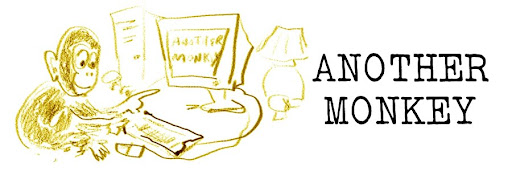
I started taking pictures almost as soon as I got outside tonight. My first few shots were out of focus, as the camera seemed to be having trouble focusing at infinity with the sky so bright. But after twenty minutes or so, I was able to get the image from which the detail above is taken at 8:33 PM. The essential elements are visible: the slim crescent Moon, with its dark regions lit by reflected Earthshine and faintly visible; the Pleiades - some of the brighter ones, anyway - directly below and to the right of the Moon; and Mercury, lower and farther to the right.

Eleven minutes later, at 8:44, a very good balance between sky brightness, crescent brightness, and faint detail visibility was struck.

A close-up of the central portion of the image above. Now the details on the dark part of the Moon are more clearly visible, as are the Pleiades and bright Mercury, just disappearing behind a tree. I needed to change my vantage point shortly after I took this photo.

An even closer close-up of just the Moon and the Pleiades. Surprisingly, the Pleiades photographed better with bright skies than with dark.
 A detail from another image showing the same general scene, but from ten minutes later, at 8:54 PM. At this point Mercury is about to disappear behind the rooftops across the street. I was able to extend my viewing session a bit by moving uphill and then shifting from side to side until Mercury appeared between the rooftops. But by a few minutes after 9:00, Mercury had passed from view entirely.
A detail from another image showing the same general scene, but from ten minutes later, at 8:54 PM. At this point Mercury is about to disappear behind the rooftops across the street. I was able to extend my viewing session a bit by moving uphill and then shifting from side to side until Mercury appeared between the rooftops. But by a few minutes after 9:00, Mercury had passed from view entirely.
Some, but not all, of my photos seem to show Mercury as a disk. But is this legitimate? At last we have a basis for comparison: the Moon and the "disk" of Mercury in the same image, as in the one above.
I was disheartened by the fact that Mercury appeared to be in much better focus than the larger Moon. This alone suggested that this disk was not the result of exceptional optics, but rather represented an out-of-focus blur. Still, I was able to select both the image of the Moon and the image of Mercury to compare sizes. These two images - resized for presentation here, but retaining the same relative proportions - are shown below.

The original image of the Moon fit within a 200 x 200 pixel box, while the original image of Mercury fit into a 27 x 27 pixel box - a size difference of only about 7.5 times. Did the Moon really appear only 7.5 times as wide as Mercury on April 26,2009, around 8:50 PM? That's something I need to look up.
UPDATE: Unfortunately, no. The Moon has an apparent angular diameter that varies from 29.3 to 34.1 arcminutes, according to Wikipedia. From the same source, the apparent angular diameter of Mercury is from 4.5 to 13 arcseconds. As there are 60 arcseconds in an arcminute, the Moon's apparent diameter is from 1758 arcseconds to 2046 arcseconds. So the size ratio of the Moon to Mercury goes from a minimum of 1758/13 = 135.2/1 to a maximum of 2046/4.5 = 454.67/1. A bit more than 7.5/1. So it looks like I'm not really resolving the disk of Mercury with my Nikon Coolpix L4 after all!






















No comments:
Post a Comment